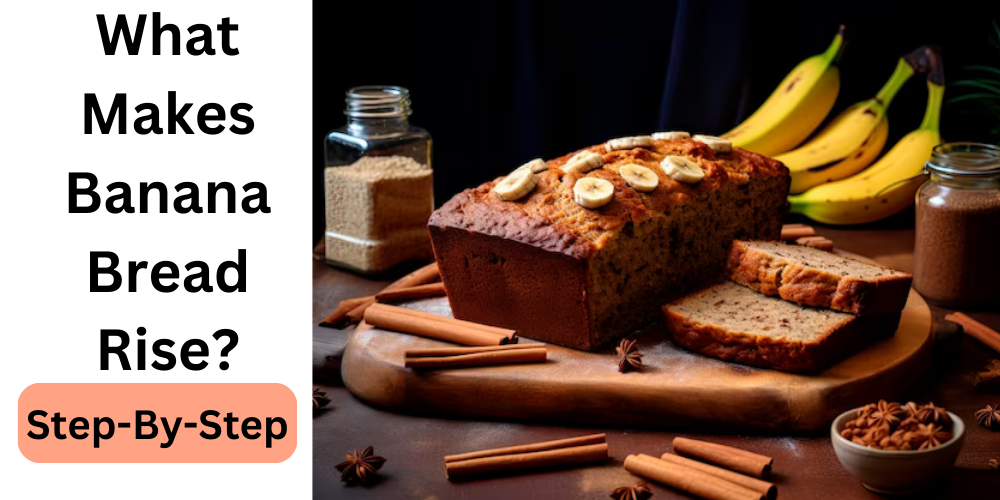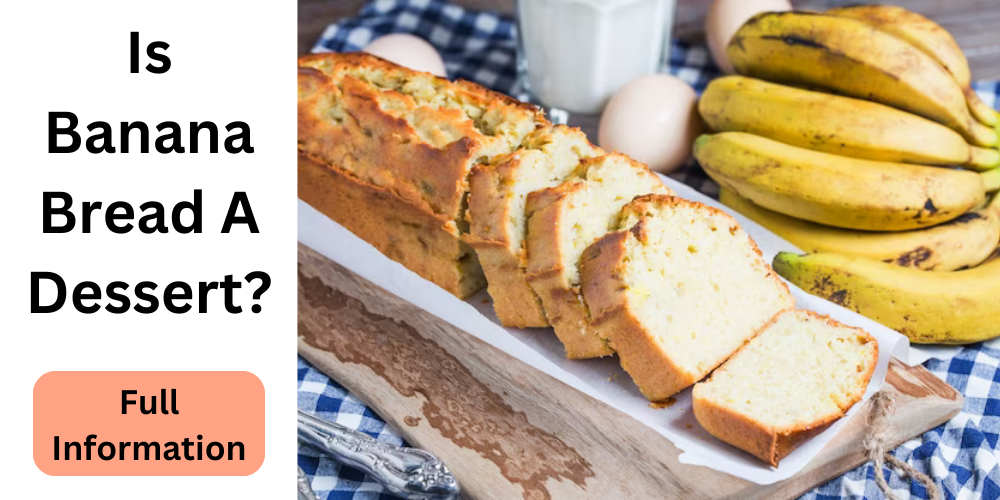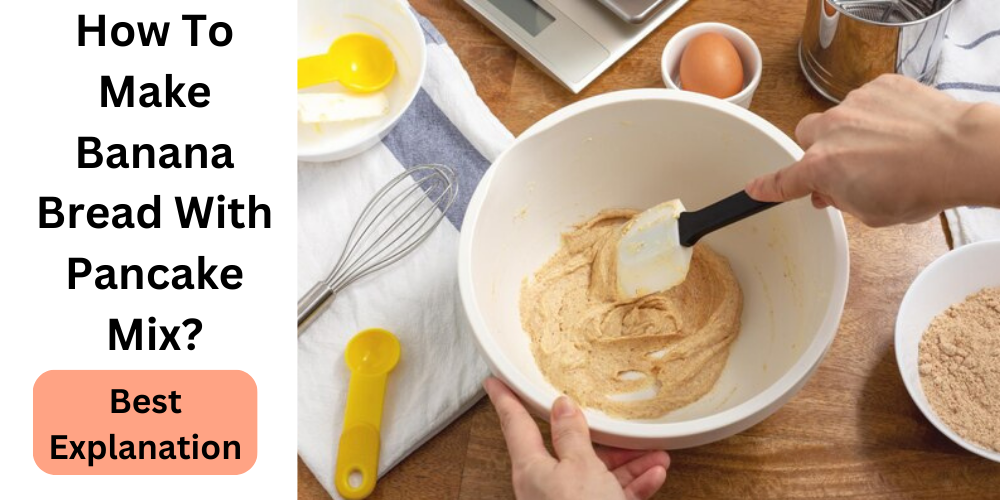Banana bread is a beloved treat in many households, offering a delightful combination of sweetness and a hint of fruitiness. Baked banana bread is a joy to behold and savor, and one key factor that contributes to its appeal is its rise. But have you ever wondered, What makes banana bread rise? In this article, we will explore the science and art behind creating a risen banana bread that will have your taste buds dancing with delight.

What Makes Banana Bread Rise?
Leavening agents are the unsung heroes behind the rise of banana bread. What makes banana bread rise? These specialists are responsible for making the air pockets in the bread, making it light and cushy. There are two essential sorts of raising specialists usually utilized in banana bread recipes: baking pop and baking powder.
- Baking Soda: Baking pop, otherwise called sodium bicarbonate, is a soluble compound. At the point when it comes into contact with acidic fixings, for example, pounded bananas, it produces carbon dioxide gas. This gas gets trapped in the batter, causing the banana bread to rise. It’s important to note that you need an acidic element in your recipe to activate baking soda. For this situation, the crushed bananas give the necessary corrosiveness.
- Baking Powder: Baking powder is a mix of a corrosive (generally cream of tartar) and a base (baking pop). This double activity raising specialist discharges carbon dioxide gas in two phases. First when it’s blended in with wet fixings and again when warming in the oven is uncovered. This means that banana bread recipes with baking powder can rise. Even without the need for acidic ingredients beyond the bananas.
The Magic of Chemical Reactions
The rise in banana bread is not about mixing ingredients and popping them in the oven. It’s about the magic of chemical reactions. As the leavening agents react with other components of the batter. A series of transformations take place.
- Baking Soda and Acidic Ingredients: When baking soda reacts with the acid from the mashed bananas. It produces carbon dioxide gas. This gas gets trapped in the batter, forming bubbles that expand and make the banana bread rise. The reaction happens which is why it’s essential to bake the bread soon after mixing the ingredients.
- Baking Powder Double-Action: Baking powder, as the name suggests, acts in two stages. The first reaction occurs when it’s mixed with the wet ingredients. The acid and base components of baking powder start producing carbon dioxide gas. This initial rise gives the banana bread its initial lift. The second reaction happens in the oven when the bread is exposed to heat. The remaining gas is released, causing further expansion and giving the bread its final fluffy texture.
Other Ingredients and Techniques
While leavening agents make banana bread rise, other ingredients and techniques can further enhance the bread’s texture and height.
- Eggs: Eggs are often included in banana bread recipes not only for their binding properties. But also because they help create a light and airy texture. The proteins in eggs provide structure, while the water content turns into steam during baking. Contributing to the bread’s rise.
- Creaming Butter and Sugar: Creaming butter and sugar together creates a light, airy mixture that can trap air when baking, contributing to the rise of the banana bread.
- Overmixing: While mixing is necessary to combine the ingredients, overmixing can lead to a dense banana bread. It’s essential to stop mixing as soon as the ingredients are combined to prevent the overdevelopment of gluten, which can inhibit the rise.
- Oven Temperature: The right oven temperature is crucial for achieving a risen banana bread. Preheat your oven to the specified temperature in your recipe. And place your bread in the center of the oven for even heat distribution.
- Fresh Ingredients: Use fresh ingredients, especially ripe bananas. Must be for a slice of flavorful and well-risen banana bread. Overripe bananas not only provide more natural sweetness but also have a higher acidity level. Which can enhance the action of leavening agents.
Related Guides:
Why My Banana Bread Does Not Rise?
Several factors can cause banana bread not to rise. Overripe bananas may not provide enough leavening power. Using expired or insufficient baking powder/soda can also hinder rising. Additionally, overmixing the batter can result in a dense texture. Ensure fresh ingredients, proper leavening, and gentle mixing for a fluffy banana bread.
What Is the Secret to Making Banana Bread Rise?
The secret to making banana bread rise lies in using overripe bananas. Which are sweeter and have a higher moisture content. The natural sugars and moisture create a tender crumb. And encourage leavening agents like baking soda or powder to work. Proper mixing and not overmixing are also key.
Why Does My Banana Bread Stay Flat?
Your banana bread may stay flat due to several factors. Overmixing the batter can lead to a dense texture, while outdated leavening agents won’t provide the necessary lift. Using too much banana or underbaking can also result in an aquatic center. Proper measurements, ingredient freshness, and bake time are key to achieving a risen banana bread.
What Causes Bread to Go Flat?
Bread goes flat due to inadequate yeast activity or rising time. When yeast isn’t given enough time to ferment the dough or used in insufficient quantities, the bread won’t rise, resulting in a flat, dense texture. Proper yeast, time, and technique are essential for achieving fluffy bread.
Conclusion:
The key to making banana bread rise lies in understanding the role of leavening agents. What makes banana bread rise? The science of chemical reactions, and the influence of other ingredients and techniques. By following the tips and suggestions outlined in this article. You can create a risen banana bread that will have everyone asking for seconds. So, roll up your sleeves, grab your ripest bananas, and start baking your way to fluffy, delicious perfection.
Sources:
- By Lynne Schenk, My banana bread batter is flat when I put it in the oven. Why does the loaf always come out curved at the top? Posted 2 years ago




